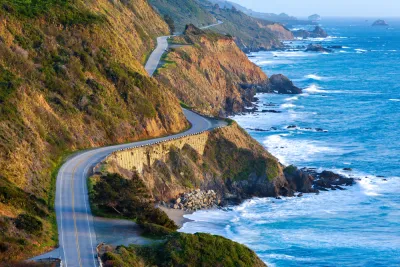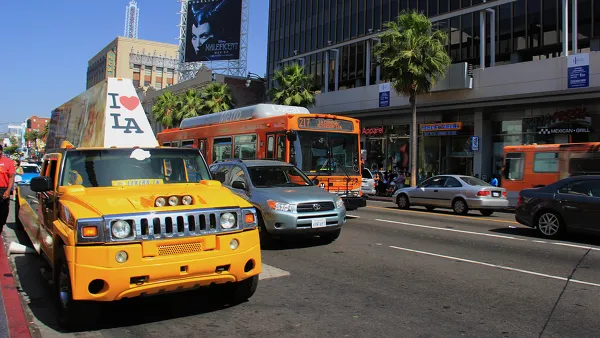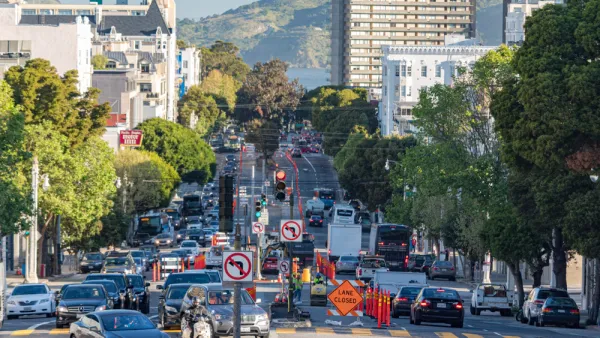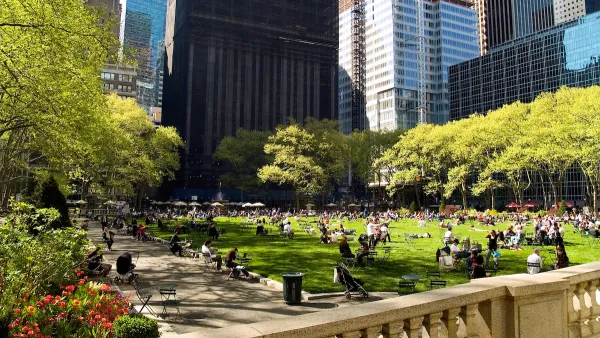At long last, California law will consider the amount of driving, rather than vehicle delay, when evaluating the environmental impacts of new developments. This is a more common-sense approximation of their environmental impacts.

"Starting Wednesday, at long last, vehicle delay will no longer be considered an impact to the environment under California environmental law. Instead, the amount of driving – rather than the smooth flow of driving – must be measured. This is a more common-sense approximation of the environmental damage from vehicle trips serving new development than mere delay to drivers, but the old way was so entrenched that it has taken years to get to this point," reports Melanie Curry.
"When S.B. 743 finally goes into effect, long commutes and suburban housing will not suddenly cease to exist. What will happen is that, under California environmental law, the amount of driving that new projects produce will have to be estimated, and if it is excessive, it will have to somehow be mitigated. Shenanigans to sidestep CEQA won’t stop, but the focus will shift from the current practice of mitigating congestion by building wider, faster roads – thus encouraging more driving and indeed ensuring it is the only viable way to get around – to finding ways to encourage more sustainable and healthy and less environmentally harmful travel – such as walking, biking, and, yes, transit."
"The new rules will make it easier to build housing near transit and jobs, where fewer car trips would be generated, because trying to mitigate for congestion – via wider roads and intersections – is much more difficult and expensive in built-up areas, and that burden will be removed. This can also make investments in sustainable and innovative transportation solutions, like ride sharing and micromobility, much easier for local and regional agencies. Those investments, in turn, can increase accessibility for residents who do not own cars."
FULL STORY: New Rule on Environmental Impacts of Driving, Long Awaited, Goes Into Effect on Wednesday

Analysis: Cybertruck Fatality Rate Far Exceeds That of Ford Pinto
The Tesla Cybertruck was recalled seven times last year.

National Parks Layoffs Will Cause Communities to Lose Billions
Thousands of essential park workers were laid off this week, just before the busy spring break season.

Retro-silient?: America’s First “Eco-burb,” The Woodlands Turns 50
A master-planned community north of Houston offers lessons on green infrastructure and resilient design, but falls short of its founder’s lofty affordability and walkability goals.

Test News Post 1
This is a summary

Analysis: Cybertruck Fatality Rate Far Exceeds That of Ford Pinto
The Tesla Cybertruck was recalled seven times last year.

Test News Headline 46
Test for the image on the front page.
Urban Design for Planners 1: Software Tools
This six-course series explores essential urban design concepts using open source software and equips planners with the tools they need to participate fully in the urban design process.
Planning for Universal Design
Learn the tools for implementing Universal Design in planning regulations.
EMC Planning Group, Inc.
Planetizen
Planetizen
Mpact (formerly Rail~Volution)
Great Falls Development Authority, Inc.
HUDs Office of Policy Development and Research
NYU Wagner Graduate School of Public Service




























